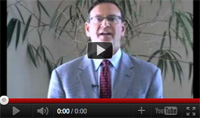CHAPTER TWO:
IMPROVING LEADERSHIP THROUGH UNDERSTANDING
THE FOUR LEVELS OF LEADERSHIP
What makes a teacher a leader? What helps turn a teacher into a leader? What distinguishes a strong leader who can build set goals and work either alone or with successful teams to achieve them? What is it about some people who are able to get the best out of themselves and others on a regular basis? Why do some people refuse to take on leadership responsibilities or fail when they accept these leadership responsibilities? This chapter will answer these important questions in ways that teachers can use right away to become better leaders.
What Leadership Looks Like…
In order for teachers to become better leaders, teachers must gain a clearer picture of “what leadership looks like.” This chapter paints that picture and assists teachers improve their leadership ability. We have found that having a framework for understanding leadership development is a critical underpinning to improving as a leader. This chapter provides such a leadership framework. This chapter is designed to operate both on the individual level and the organizational level. At the individual level it is our goal to help teachers become better leaders in their classrooms, in their schools and in their lives.
As we stated before, when leaders lead best, they help others become better leaders. We say they increase the leadership culture or the leadership density around them. By assisting individual teachers become better leaders, by assisting teachers who are good leaders to help other teachers just gaining leadership skills and abilities become better leaders, you can expand the leadership density of your educational institution. Just reading and studying a book, a framework, and leadership rubrics, can only be a start in that direction.
Improved leadership capability, what we call leadership development, requires action learning, real leadership behavior tried in the real world where there are real consequences and real stakes. The exercises we provide throughout this book will assist you in being a better leader in your educational organizational environments and elsewhere throughout your life.
This chapter promotes your success in operating at any level of leadership at any time. In some situations, level one leadership will be sufficient. In other situations you will want to move to level two leadership where you devote enough time to understand everyone’s perspective. In other situations you will want to assist others in becoming better leaders on this issue, a level three action. And, in some matters, you will want to undertake level four leadership and take full responsibility for leading the entire organization to achieve the desired goal.
Leaders always seek to estimate the amount of time any leadership level will take on any matter. Leaders do take on many responsibilities, but not more than they can handle. We know teachers’ schedules are already very busy. But we believe as teachers become better leaders, they can fit additional leadership responsibilities into their working lives.
Leadership at levels three and four require substantial planning. Level four requires identifying and securing the necessary resources to achieve the goal or enrolling someone else who can do that to assist you in taking responsibility for achieving a solution at the organizational level. Teachers can be very effective level one, two, three or four leaders at any time in their career. Leadership does not require seniority. It requires leadership skills and leadership dedication. The remainder of this book is designed to assist teachers in gaining experience as a leader and being able to spot leadership opportunities that others may not see.
LISTEN TO OUR MOST RECENT WEBINAR
* The concept is incredibly important. I believe that building leadership capacity at all levels of school districts is essential if we are to solve our problems of practice and focus on continuous improvement...[read more]
Cindy Stevenson Superintendent, Jefferson County Schools, Golden CO


